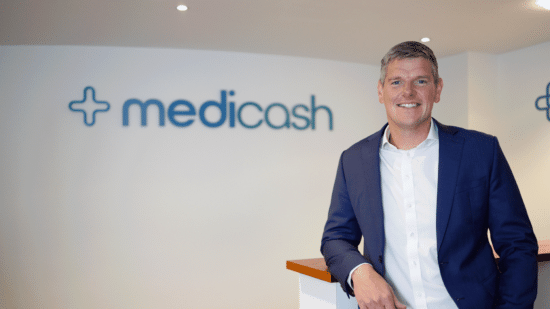
More than half of the UK’s employers have now invested in a standalone employee wellbeing strategy for their workforce.
That’s according to the CIPD, whose latest research into the UK’s workplace wellbeing habits has uncovered a renewed investment from British employers into their wellbeing strategy. But why are so many businesses focusing their efforts on their employees’ wellbeing during a time of increasing interest rates and rising inflation?
The secret, it seems, lies in the hidden link between improved employee wellbeing and company performance. With almost three-quarters of businesses reporting difficulties in recruitment – 66% of which naming labour costs as a source of financial pressure – there has never been more awareness of the importance of attracting, and more importantly retaining, the right talent. What’s more, with more people than ever before reporting heightened physical health and mental health issues, as well as financial worries, employers are beginning to wake up to the impact of stress and poor health on their workforce’s productivity – and ultimately, their bottom line.
As the concept of wellbeing continues to grow in scope, a better understanding of how better job satisfaction and employee support can benefit your business’ output is only becoming more important as we head into 2024.
Understanding employee wellbeing
‘Wellbeing’ – specifically in the context of ‘employee wellbeing’ or ‘workplace wellbeing’ – can mean a lot of things. At its most simple, the idea of wellbeing refers to the state of having good overall health and quality of life. But in practice, it’s a little more complicated than that.
Most comprehensive understandings of ‘wellbeing’ break the concept down into four key pillars:
- Physical wellbeing – The state of our physical health, such as how often we receive regular health checks, exercise, or having a nutritious diet.
- Mental wellbeing – How we engage with and support the way we feel, including how much stress we’re under, our levels of overall happiness, and feel a sense of purpose.
- Financial wellbeing – The way we manage (and are managed by!) our money, such as our balancing of budgets, savings, and debt worries.
- Social wellbeing – How we maintain relationships with others and engage in social interactions, such as with our friends, family, and work colleagues.
These different elements of wellbeing make it clear that when it comes to workplace wellbeing, a holistic approach – that is, an approach that recognises how these elements work together to promote better wellbeing – is key to a healthy and thriving workforce.
The reason for this is simple – when we feel better, we work better! Recent research by Gympass has found that 93% of employees say that their workplace wellbeing is as important to them as their salary, pointing to a key point of retention and job satisfaction among today’s workforce. In fact, the same study even found that a company’s approach to workplace wellbeing is increasingly becoming a deciding factor in an employee’s attitude – with 87% saying that they would consider leaving a company who didn’t show concern for employee wellbeing, and as many as 96% saying that they actively seek out prospective employers who place a clear emphasis on wellbeing.
The wellbeing strategy impact
If today’s workforce is seeking employers who proactively support better health and wellbeing, it’s clear that just as many companies are taking note of the benefits of an actively engaged workforce. With many HR outlets reporting that employee engagement will continue to become a key focus of the employment sector in 2024, improving their employees’ wellbeing has become central to many businesses’ retention strategies. Research by the CIPD has now found that companies who actively provide health & wellbeing initiatives report:
- Better employee engagement & morale
- Lower sickness absence
- Better staff retention
- More effective working relationships
- Reduced stress
- Enhanced brand image & customer service
- Improved productivity
In fact, this survey even found that one third of employers who offer them say that their health & wellbeing activities have contributed to better employee engagement and an overall healthier company culture.
The cost of poor employee wellbeing
Data shows that the primary cost of poor employee wellbeing is felt in lost productivity, high levels of stress and burnout, and health-related absences – all of which contribute to a severe impact on both a business’ bottom line and brand image.
Battling burnout
‘Burnout’ has been increasingly on HR leaders’ radar in recent years as workplaces struggle to keep up with demand, and refers to the point in which an employee’s stress levels become unmanageable. With more than 17 million working days lost due to workplace stress or work-related mental health issues between 2021 and 2022, these increasingly high levels of stress and subsequent rates of employee burnout are now estimated to be among the UK economy’s costliest wellbeing shortfall. Workplace researchers Gallup even estimate that the current cost of burnout and work-related mental health issues is as high as $322 billion globally in turnover and lost productivity.
Even more severely, Gallup’s research shows that it’s no longer enough to coast by on workplace wellbeing, as employees who are engaged but not fully thriving carry a 60% higher chance of burnout than employees who have full job satisfaction and a great wellbeing strategy.
Presenteeism – a growing concern
‘Presenteeism’ refers to the phenomenon of employees continuing to work despite operating at reduced levels of productivity – typically through illness, injury, or stressful life situations. Typically a symptom of poor workplace psychological safety, presenteeism has become one of the most common wellbeing concerns among workplaces today with 76% of HR professionals saying that they have seen presenteeism in their workplace and 78% noticing presenteeism among employees working from home, according to the CIPD. Deloitte have even estimated that the cost of lost productivity caused by presenteeism could be as high as £29 billion per year for UK employers – potentially a higher cost than short-term sickness absence.
There has never been a more important time to invest in better mental health support for your employees. Our Employee Assistance Programme is designed to offer proactive support for both physical health and mental health issues, meaning that your workforce can find the help they need before their problems feel too big to handle. Find out more about our EAP service here.
But here’s the clincher – employee retention is, now more than ever before, a major cost-saving measure for businesses. A 2014 report by Oxford Economics found that the loss of an employee can cost a business more than £30,600 in lost productivity and recruitment costs. Adjusted for inflation, that equals more than £40,000 in 2023!
The ROI (or VOI) of employee wellbeing
It’s clear that when it comes to employee wellbeing, it’s easy to measure the impact of not investing in your work environment. So how do you measure your unique Return on Investment (ROI) for your workplace wellbeing strategy?
The EAP Association have found that the average return on investment for an employee assistance programme now equals around £10.85 for every £1 spent, indicating a huge increase in ROI for workplace wellbeing as employee behaviours and expectations shift. However, as wellbeing strategies are increasingly being focused on holistic wellbeing and proactive, long-term support – as opposed to reactive, short-term management – it has been suggested that return on investment is no longer a meaningful way of measuring a wellbeing initiative’s overall impact.
Instead, many businesses now choose to assess their employee wellbeing impact via VOI, value of investment. Whereas typical ROI is only able to calculate an estimate of hard costs such as health-related absence and insurance claims, VOI takes a broader look at the impact of wellbeing – including cost savings, retention, engagement and morale, productivity and job satisfaction – that can have a significantly more widespread impact on a company’s bottom line.
Even so, for those companies who do use ROI as a key metric for their wellbeing initiative, Gympass’ research found that 9 out of 10 companies who track their wellbeing KPIs reported seeing a positive return on investment, with 85% of HR leaders further reporting that their wellbeing strategy has led to an overall decrease in talent management costs.
So how can companies look to increase their ROI or VOI when it comes to their employee wellbeing?
Building a healthy company culture
With a positive company culture and employee experience being named as the top priority of today’s talent, creating a healthy work environment is vital to great overall health and wellbeing for your workforce. Assessing employee engagement, psychological safety, and available support for both physical health and mental health issues are integral to a great wellbeing strategy.
Did you know that our colleagues at Health@Work not only help you to assess your approach to a healthy work environment, but also support you in building your own bespoke wellbeing strategy via their nationally recognised Workplace Wellbeing Charter? Find out more at their website.
Making wellbeing initiatives work for your workforce
Great health benefits are the first step to a comprehensive wellbeing approach. Whether that’s by offering your employees support with their physical health treatments via a health cash plan, offering top quality mental health support with a great employee assistance programme, or offering flexible or hybrid working schemes, your health & wellbeing benefits are a great place to start.
The evidence is clear that great employee wellbeing solutions are no longer a nice-to-have, but a central feature of every good employer’s HR strategy. By investing in employees’ overall health and wellbeing, employers not only boost productivity, job satisfaction, and engagement – leading to more creative, motivated employees who are able to thrive in their roles – but also reduce the ever-increasing costs of poor employee retention.
Does your organisation have a healthy company culture that employees love to be involved in? Our comprehensive range of award-winning health cash plans are designed to keep your workforce both physically and mentally healthy, wherever and whenever they need help. Click here to get in touch with our team to find out how a Medicash health plan can support your wellbeing goals in 2024.



